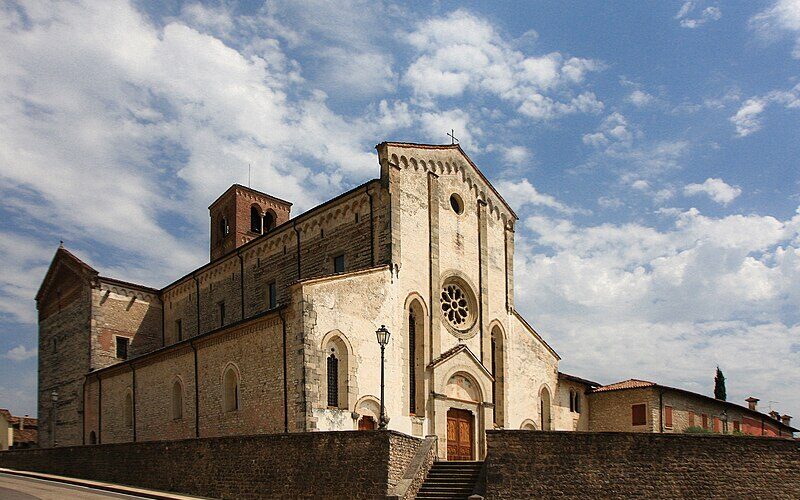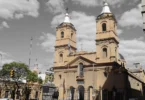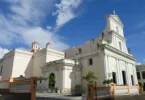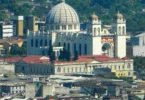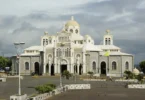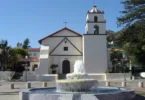Introduction
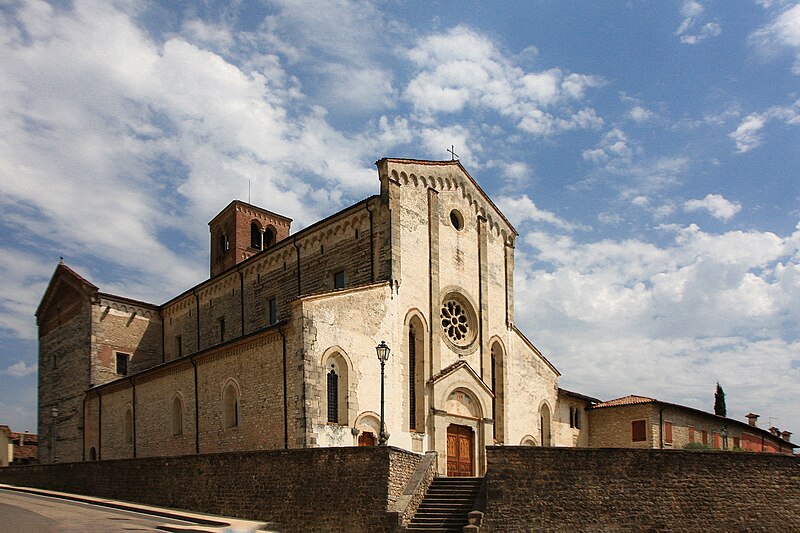
The Abbey of Santa Maria , also called Sanavalle ( Sanavallis ), was a Cistercian monastery , now the seat of the parish of Follina , in the province of Treviso . It has the title of minor basilica .
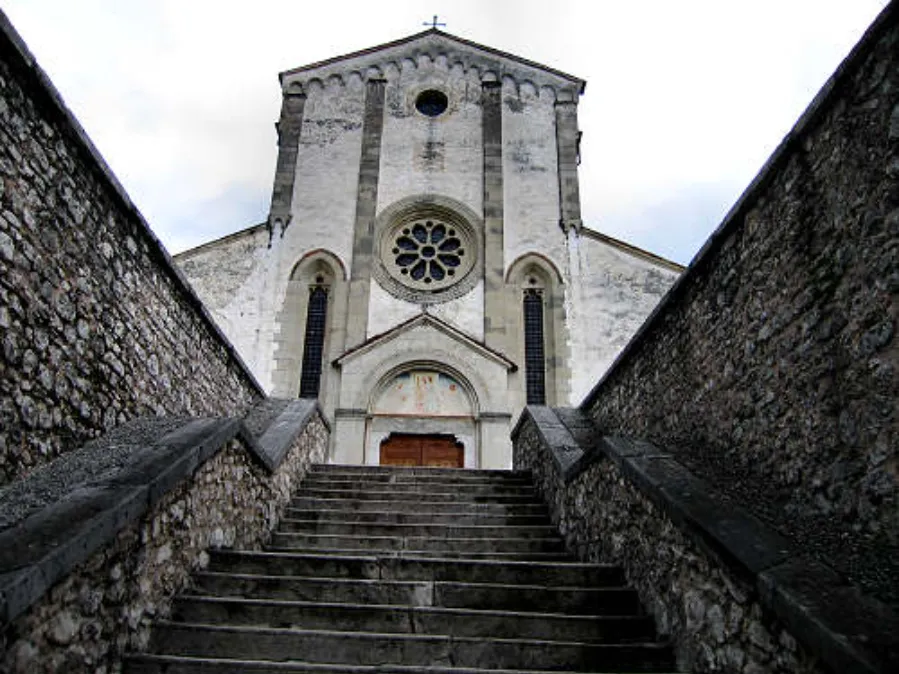
The first mention of the abbey was in a document from 1127 , attesting to the sale of three fields by the abbot Bernardo di Follina to a certain Arpone. The parchment was transcribed in the 17th century and the copy is now preserved in the Municipal Library of Treviso . A monastic complex therefore existed well before the arrival of the Cistercians , in the mid- 12th century . It was most likely a monastery of Benedictines dependent on San Fermo of Verona , in which an ancient statue of the Madonna was venerated.
It is not clear when and how the transition to the Cistercian order occurred. Some sources state that the Benedictines changed their monastic rule, but according to others, more likely, they were replaced by a new community. Consequently, the bond with the Veronese abbey began to weaken: a significant document is from 1217 , in which Pope Honorius III resolved in favor of Follina a dispute with San Fermo, due to the fact that the former refused to pay the latter, claiming its independence for more than forty years.
The traditional date of foundation, the year 1146 , is not actually supported by historical sources. The Annales Camaldulenses themselves state that it is impossible to determine its origins, concluding that towards the middle of the 12th century the Benedictine abbey of Follina became Cistercian. It seems plausible that the community was called by Sofia di Colfosco , wife of Guecellone II da Camino , who in fact in 1170 drew up a will with which she made rich donations to the monastery.
Follina was certainly linked for a long time to the abbeys of Chiaravalle and Cîteaux , the most important Cistercian centres in Italy and Europe respectively. Over time the abbey was enriched by other donations, reaching the height of its splendor in the 13th century . In 1124 Gabriele da Camino left the castle of Cison and the castle of Soligo ; in 1229 Pope Gregory IX submitted to him the Hospital of Santa Maria di Piave and then the monastery of Santa Margherita di Torcello ; in 1324 the monastery of Saints Gervasio and Protasio of Belluno was added . At the same time the complex expanded: in 1268 the cloister was built , while between 1305 and 1335 the church was built.
From 1388 the abbey passed to the Serenissima . During its policy of expansion, Venice clashed several times with the Sforza , the Visconti and with the Kingdom of France , in whose territories were located Chiaravalle and Cîteaux, on which Follina depended. Therefore, viewing the monastic institution with suspicion, in 1448 the government asked Pope Nicholas V for its suppression.
The abbey was thus reduced to a commendation . Among the commendation abbots, some illustrious figures are worth mentioning, such as Pietro Barbo , the future Pope Paul II , and Carlo Borromeo , who entrusted the administration of the assets first to the Dominicans , then to the Benedictines . In 1573, the commendation passed to Tolomeo Gallio , who entrusted it to the Camaldolese . The latter settled there permanently in 1739 , but in 1771 the Republic of Venice suppressed the monastery, transferring its assets to San Michele di Murano and transforming the church into a curacy. The buildings of the complex, with the exception of the church and the sacristy, were sold to private individuals, which caused serious architectural damage.
From 1807 , after the Napoleonic suppressions, the assets were looked after by Don Bonifacio Baseggio, former Camaldolese monk of San Michele. The church, left by the latter to the municipality of Follina in 1819 , was erected as a parish the following year by the bishop of Ceneda Giovanni Benedetto Falier , another Camaldolese from Murano.
In 1834 the monastery was ceded to the parish by the Gera counts of Conegliano . The Servants of Mary have resided there since 1915. During the Great War the church suffered serious damage which was remedied by restoration work which began in 1919. In 1921 Cardinal Pietro La Fontaine crowned the statue of the Madonna, while Pope Benedict XV declared the church a minor basilica.
In 2015, the community of Follina celebrated the centenary presence of the Servants of Mary and, with the transfer of the mortal remains of Father Anacleto Milani into the basilica, remembered his work as the first Servant of Mary parish priest and as mayor during the Austro-Hungarian occupation of the First World War . On 12 May 2018 the abbey celebrated the 750th anniversary of the construction of the cloister with the Dante a Follina event : the Odhecaton ensemble performed the premiere of Canto XXXIII of Paradiso , composed by Mirco De Stefani .
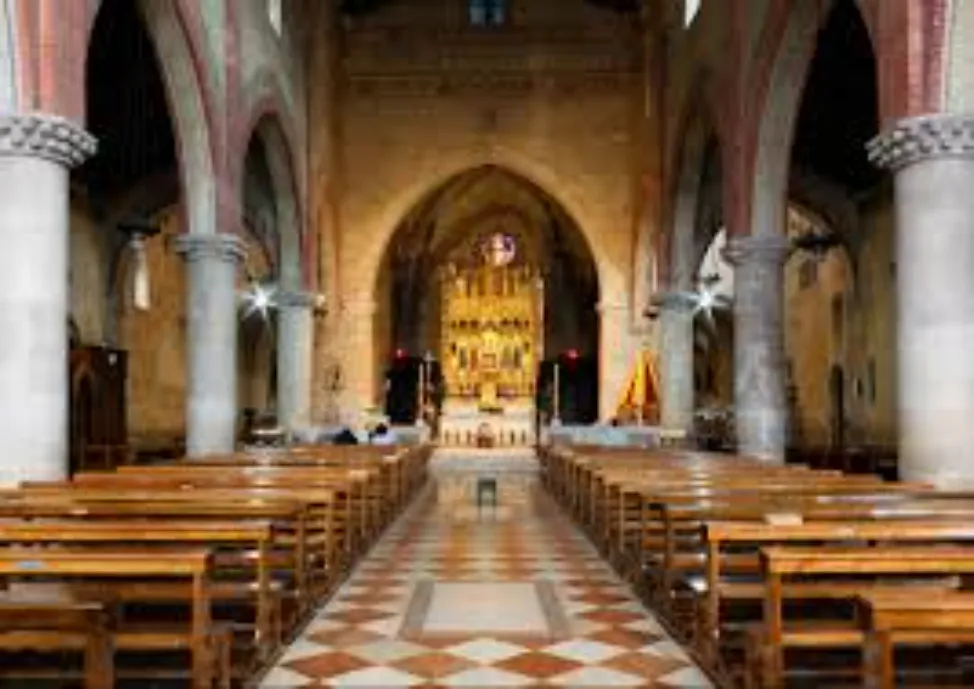
The façade is one of the best examples of Cistercian Gothic in the Veneto. The salient structure is underlined by slender pilasters and profiles in grey stone that stand out against the white plastered backgrounds. The holes are also surrounded by grey stone with very simple geometric decorations. Three architraved portals , inserted in slightly protruding round arches, give access to the naves . The light enters through four Gothic lancet windows, one in correspondence with each lateral nave, two larger ones in the central one, and two rose windows , one, with a larger radius in Gothic style, the other, simpler, just below the hanging arches that conclude the central span upwards. The interior with three naves, with a trussed roof , is divided into five spans by large pointed arches resting on simple columns with crocheted capitals. In the central nave above the capitals slender pilasters increase the sense of verticality. Three square-plan apses open onto the transept . Simple frescoed bands with floral motifs and evangelical figures decorate the hall. Of greatest interest is the fresco by Francesco da Milano depicting a Madonna and Child between two saints and a patron ( 1527 ), a valuable wooden Crucifix from the Baroque period , and the fresco from the beginning of the 15th century, which is very deteriorated, with Saint Thomas Aquinas . The sandstone statue of the Madonna of the Sacred Chalice , inserted in a large wooden altarpiece in neo-Gothic style ( 1921 ), a copy of the original in the church of San Zaccaria in Venice , has been an object of veneration and pilgrimage since time immemorial because it is considered miraculous. The bell tower, with a square plan in Romanesque style, the oldest artefact of the architectural complex of the abbey, rises at the intersection of the central nave with the right transept.
Cloister
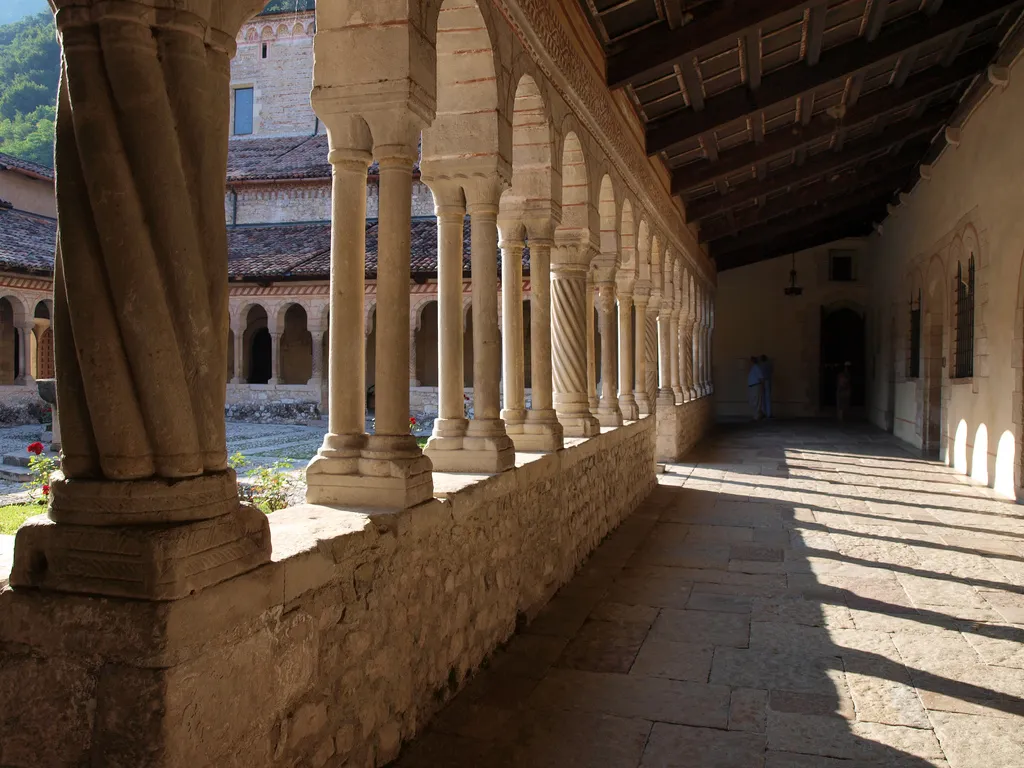
A plaque reports, in elegant Gothic characters, the date and names of the builders of the cloister (the monks Arnaldo and Andrea and the magistros – master builders – Zardino and Armano) which overlooks the most important rooms of the abbey: the Chapter Hall, the Refectory, the Library, the Parlour. In the centre is the traditional fountain with a monolithic basin. The small arches are supported by single, ophitic , binary columns and, at the corners, by bundles of four. Both the shafts (twisted, smooth, smooth, wavy, papyrus-shaped or with lotus flower decoration) and the capitals (some geometric, some naturalistic, some symbolic) are different.
Also architecturally interesting is the so-called Chiostrino dell’Abate , a porticoed wing with both facades entirely covered by a small loggia with arches on small columns ( 1535).
Feast Day
Feast day : 5th August
Church Mass Timing
Yet to Update
Church Opening Time:
Monday : 7 am–12 pm and 2:30–7 pm
Tuesday : 7 am–12 pm and 2:30–7 pm
Wednesday : 7 am–12 pm and 2:30–7 pm
Thursday : 7 am–12 pm and 2:30–7 pm
Friday : 7 am–12 pm and 2:30–7 pm
Saturday : 7 am–12 pm and 2:30–7 pm
Sunday : 7 am–12 pm and 2:30–7 pm
Contact Info
Address:
Via Pallade, 31051 Follina TV, Italy
Phone: +390438970231
Accommodations
Connectivities
Airway
Treviso Airport to Abbey of Santa Maria (Follina) distance between 52 min (42.2 km) via SS13 and SP4.
Railway
Treviso Railway Station to abbey of santa maria (follina) distance between 48 min (40.6 km) via SS13 and SP4.

